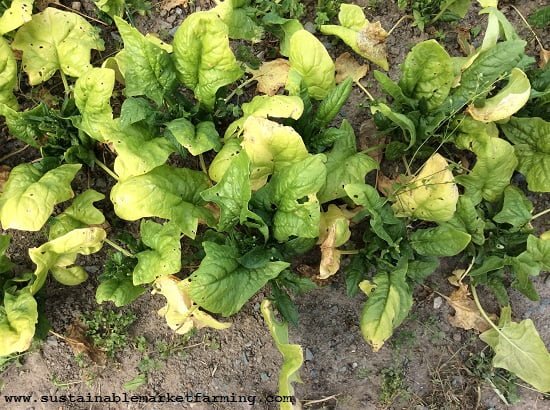Have you ever wondered why your spinach leaves suddenly start turning yellow? It can be quite puzzling, especially if you’ve been taking good care of your plants. In this article, we will explore some of the common causes behind this leafy mystery. From nutrient deficiencies to environmental factors, we’ll uncover the reasons behind your yellow spinach leaves and provide you with some practical tips to help keep your plants healthy and vibrant. So, if you’re ready to learn more about this common issue, let’s dig in and find out what’s causing your spinach leaves to lose their green hue.
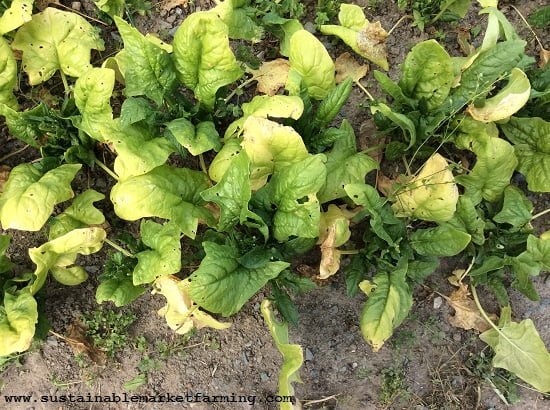
Lack of Nutrients
Nitrogen Deficiency
One common cause of yellow spinach leaves is a nitrogen deficiency. Nitrogen is an essential nutrient for plant growth and development, and its deficiency can lead to stunted growth and yellowing of leaves. When your spinach lacks sufficient nitrogen, the older leaves start to turn yellow, while the younger leaves may appear pale and small. To address this issue, you can apply nitrogen-rich fertilizers or organic matter such as compost to replenish the nitrogen levels in the soil. This will promote healthy leaf growth and prevent further yellowing.
Iron Deficiency
Another possible cause of yellow spinach leaves is iron deficiency. Iron is crucial for chlorophyll production, which gives plants their green color. When your spinach lacks sufficient iron, the leaves may turn yellow, beginning with the younger leaves. You may also notice interveinal chlorosis, where the veins of the leaves remain green while the areas between them turn yellow. To address this issue, you can use iron chelate fertilizers, which provide a readily available form of iron to the plants. Additionally, adjusting the pH of the soil to a slightly acidic level can help improve iron uptake by the spinach plants.
Magnesium Deficiency
A magnesium deficiency can also lead to yellow spinach leaves. Magnesium is a vital nutrient that is involved in various metabolic processes within the plant. When spinach lacks sufficient magnesium, the leaves may turn yellow, starting from the edges and moving towards the center. This condition is known as marginal chlorosis. To correct this deficiency, you can use magnesium sulfate or Epsom salt as a fertilizer. Applying it as a foliar spray or incorporating it into the soil can help replenish magnesium levels and restore the green color to your spinach leaves.
Watering Issues
Overwatering
Overwatering is a common mistake that can cause yellow spinach leaves. When you water your spinach excessively, it can lead to waterlogged soil, causing poor root oxygenation. This, in turn, can inhibit the plant’s ability to absorb essential nutrients, resulting in yellowing of the leaves. Overwatering also creates favorable conditions for fungal diseases such as root rot. To prevent overwatering, make sure to water your spinach plants only when the top inch of soil feels dry. Adequate drainage is crucial, so ensure that your pots or garden beds have proper drainage holes to allow excess water to escape.
Underwatering
On the other hand, underwatering can also cause yellowing of spinach leaves. When the plants don’t receive enough water, they can become stressed and their growth may be hindered. This can result in wilting, yellowing leaves. To prevent this, make sure to water your spinach plants consistently, keeping the soil moist but not saturated. Regularly check the moisture level of the soil, especially during hot and dry weather. Mulching around the plants can also help retain moisture and prevent water evaporation.
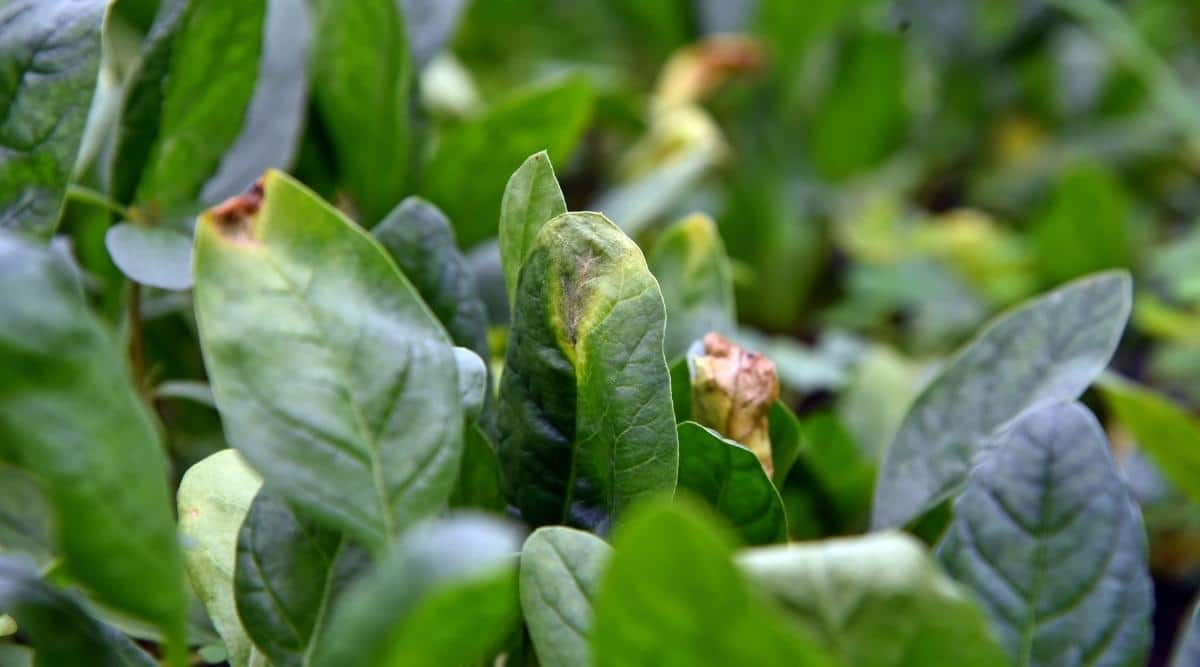
Pests and Diseases
Leafminers
Leafminers are tiny insect larvae that tunnel through the leaves, causing damage to your spinach plants. If your spinach leaves have serpentine trails or blotchy areas, it may be a sign of leafminer infestation. As a result, the affected leaves may turn yellow and eventually die off. To control leafminers, you can introduce beneficial insects such as parasitic wasps or apply organic insecticides specifically designed for leafminer control. Regularly inspecting your plants and removing any affected leaves can also help prevent the spread of this pest.
Fungal Infections
Fungal infections can also contribute to yellowing of spinach leaves. Diseases like powdery mildew and downy mildew can cause yellow spots, fuzzy growth, and a white powdery coating on the leaves. These infections thrive in humid conditions and weaken the plant’s ability to absorb nutrients, leading to leaf discoloration. To manage fungal infections, ensure proper air circulation by spacing your spinach plants adequately. Water your plants in the morning and avoid wetting the foliage. Applying fungicides or using organic treatments like neem oil can help control fungal growth and protect your spinach plants.
Root Rot
Root rot is a common fungal disease that affects spinach plants, particularly when the soil remains excessively wet. It damages the plant’s root system, leading to poor nutrient uptake and yellowing of the leaves. To prevent root rot, ensure proper drainage by using well-draining soil and providing adequate spacing between plants. Avoid overwatering and remove any plants showing signs of root rot promptly. Treating the affected plants with fungicides formulated for root rot control can help manage the disease and prevent further leaf yellowing.
Environmental Factors
Excessive Heat
Excessive heat can cause stress to spinach plants, leading to yellowing of the leaves. When exposed to high temperatures, spinach may experience heat stress, which hampers their ability to photosynthesize effectively. This can result in leaf yellowing and even leaf curling. To protect your spinach from excessive heat, consider providing shade or using shade cloths during the hottest part of the day. Additionally, watering your plants adequately and mulching around them can help regulate soil temperature and provide relief from the heat.
Frost Damage
Frost can also cause yellowing and wilting of spinach leaves. Freezing temperatures can damage the plant cells and disrupt their normal functioning, leading to reduced nutrient absorption and leaf discoloration. To protect your spinach from frost damage, consider covering the plants with frost blankets or using row covers. Watering the plants before a frost event can help insulate the roots and minimize cold damage. If a frost does occur, avoid pruning or removing damaged leaves immediately as they can provide some protection to the remaining foliage.
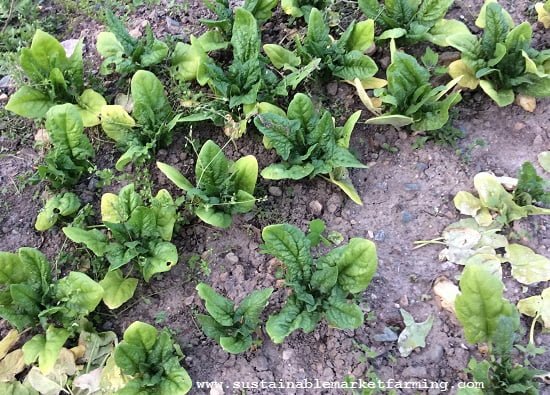
Soil pH Imbalance
Soil pH plays a crucial role in nutrient availability to plants. If the pH of your soil is too low (acidic) or too high (alkaline), it can affect the uptake and utilization of nutrients by spinach plants, resulting in yellowing of the leaves. Spinach prefers a slightly acidic soil with a pH range between 6.0 and 7.0. Conduct a soil test to determine the pH of your soil and adjust it accordingly by adding lime to raise pH or sulfur to lower pH. By maintaining the appropriate soil pH, you can ensure optimal nutrient availability for your spinach plants and prevent leaf yellowing.
Overcrowding
Overcrowding can overcrowd your spinach plants and hinder their access to essential nutrients. When plants are densely packed, they compete for nutrients, sunlight, and water, which can result in poor growth and yellowing of the leaves. To prevent overcrowding, ensure adequate spacing between plants based on the recommended guidelines. Thinning out your spinach plants if they become too crowded can also improve air circulation and reduce the risk of disease outbreaks, ultimately promoting healthier foliage.
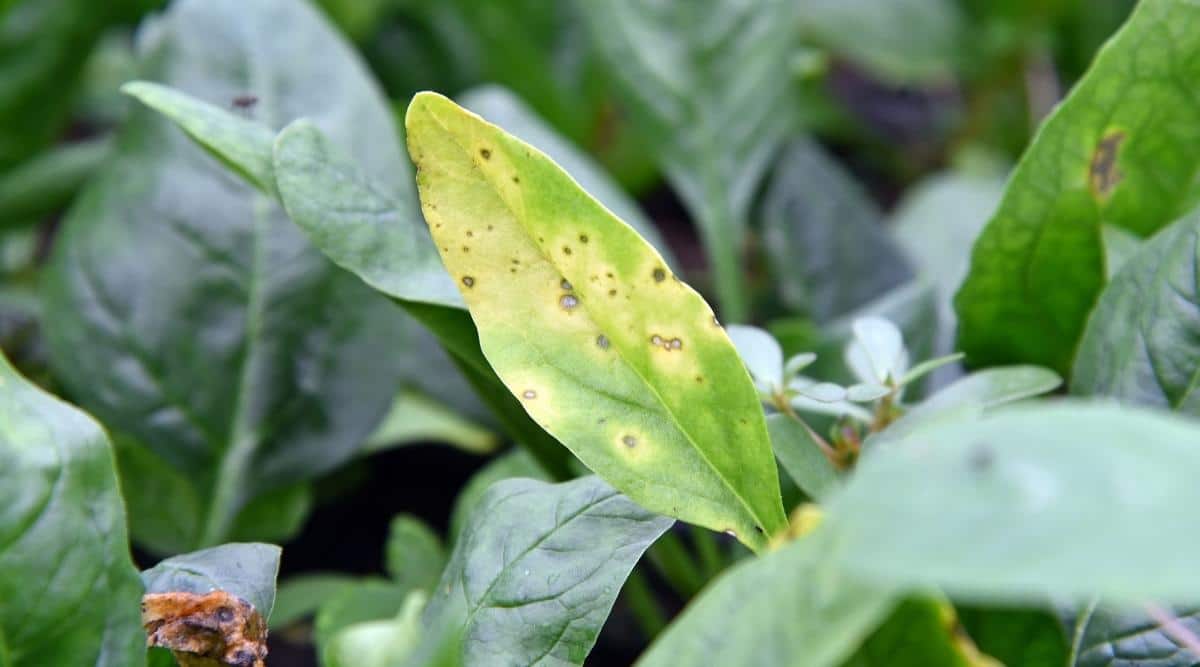
Maturity and Harvesting
As spinach plants mature and reach their harvesting stage, the lower leaves naturally begin to turn yellow. This is a normal part of the plant’s life cycle, and it indicates that the leaves are aging. When the older leaves turn yellow, it’s a good sign that the plant is nearing its peak harvest time. However, if the yellowing spreads to the newer leaves or occurs prematurely, it may indicate other underlying issues, such as nutrient deficiencies or disease. Harvest your spinach leaves regularly, plucking or cutting outer leaves and allowing the inner leaves to continue growing and replenishing the foliage.
Inadequate Sunlight
Spinach is a leafy vegetable that thrives in full sunlight. However, inadequate sunlight exposure can lead to yellowing leaves. Insufficient light limits the plant’s ability to produce energy through photosynthesis, which can result in poor growth and chlorosis. Make sure to plant your spinach in an area that receives at least 6 to 8 hours of direct sunlight per day. If you’re growing spinach indoors, ensure it has access to a bright, sunny window or use artificial grow lights to provide the necessary light intensity for healthy leaf development.

Chemical Exposures
Herbicide Damage
Unintentional exposure to certain herbicides can cause yellowing and damage to spinach plants. Herbicides that contain ingredients like 2,4-D or dicamba can drift onto your spinach from nearby applications or contaminated soil, resulting in leaf discoloration. To prevent herbicide damage, avoid using herbicides near your spinach plants, and be cautious if your neighbors use herbicides that can potentially drift onto your garden. If you suspect herbicide damage, stop using any affected produce and consult your local agricultural extension agency for further guidance.
Pesticide Residues
Exposure to pesticide residues can also contribute to the yellowing of spinach leaves. If spinach plants are sprayed with pesticides that are not safe for vegetable crops or if contaminated water is used for irrigation, it may result in leaf discoloration. It’s important to carefully read and follow the instructions provided with any pesticides you use, ensuring they are labeled for use on edible crops. Additionally, wash your spinach thoroughly before consumption to reduce the potential risk of ingesting pesticide residues.
Genetic Factors
In some cases, the yellowing of spinach leaves may be attributed to genetic factors. Different spinach varieties exhibit variations in their leaf color and can naturally have yellow or light green leaves. If you notice yellow leaves on your spinach plants without any other signs of stress or disease, it could simply be the characteristic of the particular variety you’re growing. However, if the yellowing seems abnormal or worsens, it’s recommended to rule out other possible causes such as nutrient deficiencies or environmental factors.
In conclusion, several factors can contribute to the yellowing of spinach leaves. Nutrient deficiencies, watering issues, pest and disease infestations, environmental factors, soil pH imbalance, overcrowding, maturity, inadequate sunlight, chemical exposures, and genetic factors can all play a role in leaf discoloration. By understanding these causes and taking appropriate measures, you can identify and address the underlying issues, ultimately promoting healthy and vibrant spinach foliage. Remember to monitor your plants closely, provide proper care, and seek professional advice if needed to ensure the optimal growth and yield of your spinach crop.
